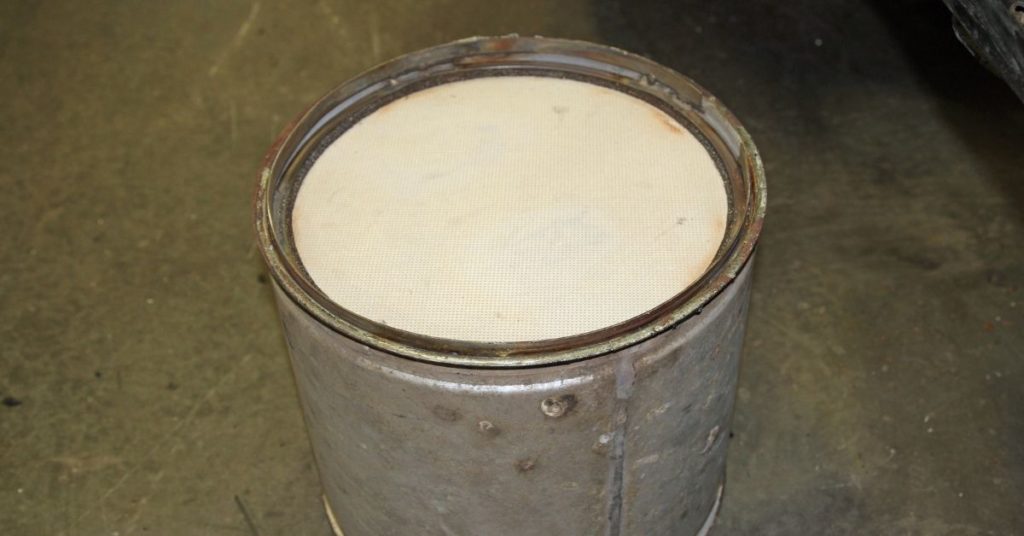One of the world’s leading concerns is the continuously rising rates of pollution. The leading cause? Vehicle emissions. To address this, car manufacturers have developed the use of catalytic converters that reduce the number of toxic fumes emitted by engines. However, is this method applicable to the ever concerning diesel engines?
Do Diesel Engines Have Catalytic Converters?
Nowadays, diesel engines already have a built-in catalytic converter that reduces the number of toxic emissions that your car produces.
When one talks about pollution caused by vehicle emissions, diesel engines tend to receive a little bit more attention due to their greater tendency to produce toxic gases compared to gas engines. In fact, they are said to produce up to four times more pollution than gas engines.
To remedy this, strict guidelines on the National Emissions Standards Act have been implemented. This includes using a catalytic converter in the exhaust system of your diesel car.
What Are Catalytic Converters?
Catalytic converters are devices found in your car’s exhaust system that function to reduce the amounts of toxic gases that your vehicle produces. These poisonous gases include nitrogen oxides, carbon monoxides, and particles, to name a few.
To most people, the catalytic converter is merely just a filter or control device for toxic gases. However, it is slightly more complicated than that.
It functions as a rearranger through redox reactions. Simply put, it rearranges the atoms in these toxic gases to reduce them and convert them into less-toxic pollutants.
How Does a Catalytic Converter Work in a Diesel Engine?
Catalytic converters are found in both gasoline engines and diesel engines. However, as both engines function differently to ignite the fuel, catalytic converters in diesel engines work differently from those in gas engines.
Diesel Oxidation Catalyst or DOC
In a diesel engine, catalytic converters use two-way oxidation that tackles the harmful gases that diesel engines emit. This two-way oxidation method is the Diesel Oxidation Catalyst or the DOC.
This catalytic converter enables diesel engines to convert carbon monoxide to carbon dioxide effectively. The way it works is that carbon monoxide and hydrocarbons undergo chemical oxidation and are converted to carbon dioxide and water.
This method also decomposes the organic portion of unused diesel.
Exhaust Gas Recirculation or EGR
More commonly, the DOC is paired with the exhaust gas recirculation method or EGR in the absence of a three-way oxidation method.
Nitrogen oxide or NOx is produced due to nitrogen exposure to extremely high temperatures that activate this usually inert gas. This harmful gas will pass directly through the exhaust system and potentially damage the atmosphere if left alone.
The exhaust is cleaned through EGR by allowing a portion of this exhausted gas to be recirculated into the car’s intake system.
By this point, the oxygen concentration is lowered, allowing the gas to burn slower and in lower temperatures. As a result, the amount of NOx is reduced.
Selective Catalytic Reduction or SCR
On the other hand, some diesel engines use the three-way oxidation method by fitting a Selective Catalytic Reduction or SCR catalyst with the DOC.
SCR works in a diesel engine by reducing nitrogen oxides to nitrogen and oxygen. This can be done by utilizing a diesel exhaust fluid or DEF of ammonia. If in case ammonia isn’t available, Urea DEF can also be used for this purpose.
Diesel Particulate Filter or DPF

The diesel engine also uses an additional ceramic substrate to reduce the emissions of soot and particulates.
These substrates are usually honeycomb-shaped with alternate open/closed channels to filter soot and remove them by regeneration. The vehicle’s computer generally manages this process.
Do Diesel Engines Need Catalytic Converters?
Yes, all diesel-powered cars are now required to have catalytic converters.
Left unchecked, diesel engines, as well as gas engines, are the leading contributors to the emission of greenhouse gases and other toxic materials. This, in turn, can significantly affect air quality and harm the surrounding environment.
To address this and minimize the emissions of these toxic fumes, many regulatory acts such as the Clean Air Act and the National Emission Standards Act have set strict requirements.
Under this act, all engines must have an Environmental Protection Agency-issued certificate of conformity demonstrating that the engine conforms to all applicable emissions requirements. For diesel engines to acquire this certificate, they often need to be fitted with catalytic converters.
How Long Do Diesel Catalytic Converters Last?
Diesel converters, like other car parts, do not last forever. While they are constructed to last the entire life of your vehicle, they usually go bad after around ten years or more. Some diesel converters may also need to be replaced after 100 000 miles or 161 000 kilometers.
These catalytic converters are constructed with the best and most expensive materials to ensure that they last you as long as your car does.
However, catalytic converters can sometimes endure unexpected physical damage and other problems that may require you to change them sooner than expected. These include deposit build-up, clogging, and overheating.
Here are some signs that will let you know that the converter is near its end:
- Issues with acceleration
- Exhaust releasing dark smoke
- Unusual smell coming from the exhaust (often likened to the smell of rotten eggs)
- Poor engine performance
- Overheating of vehicle
Other symptoms may also be present depending on the type of converter you have.
These issues can also be present for other engine issues. So, if your car starts exhibiting any of these symptoms, be sure to have it checked out as soon as possible.
Are Catalytic Converters Effective?
These filtering devices have proven to be highly effective in reducing short-term air pollution. This is mainly due to their immediate reduction of the release of carbon monoxides and nitrous oxides.
However, many environmentalists and auto engineers have brought up the possibility that these devices could be making things worse for long-term climate change for two reasons:
One, in reducing harmful emissions of nitrogen oxide by converting them to nitrogen and oxygen. However, this procedure produces trace amounts of nitrous oxide, which can be more dangerous than its predecessor.
True, the amount of nitrous oxide generated may not be out rightly harmful. But the increasing amount of vehicles on the road can lead to the build-up of this byproduct, eventually leading to alarming amounts.
Two, while these converters can reduce carbon monoxide emissions, they release carbon dioxide. Carbon dioxide is not necessarily toxic, but it is one of the most significant contributors to climate change and global warming in excess.
When utilizing these converters, it is essential to remember that they have only been built only to reduce the number of toxic substances — not take them out of the equation altogether.
In short, they are only temporary fixes.
Conclusion
Diesel engines with catalytic converters are now an industry requirement brought upon by regulations to maintain air quality. Car manufacturers, environmental scientists, and other related professions continue to work together to lessen these automobiles’ impact on the environment.
While diesel engines with catalytic converters have been great leaps towards this, it is not a complete fix. Truthfully, it has opened up a wide array of other problems that need to be resolved.
- Tips and tricks For Setting Up Camp Like a Pro - September 11, 2023
- The Best Multi-Tools for Overlanding Adventures - August 25, 2023
- Off-Road Navigation Tips for Overlanders - August 13, 2023


